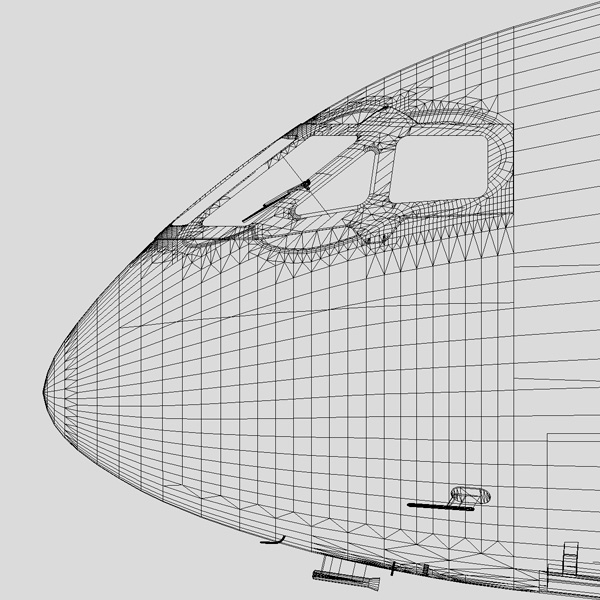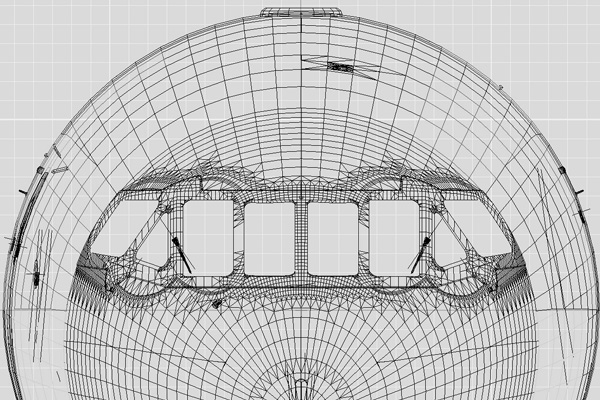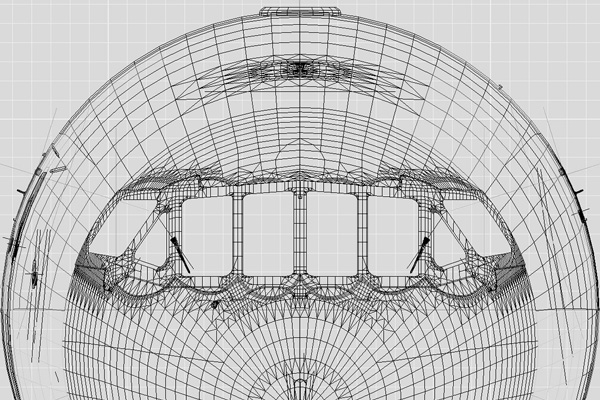Comet 4 - Fuselage and winscreen
10/10/17 12:00

Fig. 1: Comparison between Comet 4 and Comet 4B / 4C fuselage lengths.
In 2016, after correspondence with friends and testers supporting this project, it became obvious that first release had to include the most iconic livery: B.O.A.C.
It sounds so simple — just a livery — and yet anyone who knows the Comet will realise there is more to it than that. The Comet 4 was designed for the British Overseas Airways Corporation to open the World's first passenger jet service across the Atlantic, between London Airport (Heathrow) and New York (Idlewild) in 1958. So much of its payload was devoted to fuel that it carried relatively few passengers — all first class. The Boeing 707, with its second-generation "bypass" engines, had 50% more power and tremendously improved fuel consumption, enabling a larger and altogether more efficient aircraft. When B.O.A.C. received their 707s in 1960, the Comet fleet was phased out of trans-Atlantic duties. It was still a useful aeroplane, because it could take off and land on short runways, in hot and high conditions. On shorter routes, they could carry more people, and later Comets had a stretched fuselage, either as the trans-European Comet 4B, or the general purpose Comet 4C — but B.O.A.C. did not operate either of those later types. By 1973, all the Comet 4s had been taken out of (commercial) service, and scrapped for spares. An awful lot of documentation was skipped then, too. Comet 4C remained in service with Dan Air until 1980. They were also in service in America, and there was a greater abundance of photographs of those aircraft, including colour photographs. It was also the end of an era, and a greater sense that things (including documents) must be saved.
I have, at last, acquired a set of original manuals for the Comet 4, including "Maintenance Engineers' Lecture Notes" in five volumes, and performance data. These enabled me to embark on a Comet 4 model.
The difference in fuselage length is shown above. The Comet 4 was 111 feet 6 inches. (a huge increase on the 1954 Comet 1, which was only 93 feet long). The Comet 4B/4C was 118 feet long. This required chopping out and making good a section of fuselage, and also the passenger cabin and cargo bay, and making good the relevant UV maps and textures.
Comet 4 pilots had complained that the top of the windscreen was too low to see the end of the runway on approach. The Comet 4B and 4C (and Nimrod) had a revised nose cone: the four central windscreens were taller, rising to a distinct peak in the centre, and an escape hatch was fitted in the roof. This required some modification.
The nose cone of any aircraft is a difficult area to model. When I made the Comet 4C, object modelling in X-Plane was new, and I was too concerned about keeping the polygon count down. I soon realised the model was too low-resolution to modify into a Comet 4. A new nose cone was required. This time, wanted one skin to be the basis for the full range of aircraft, from Comet 1 to Comet 4C. The Comet 1 was the most streamlined, the two centre windscreens having double-curvature, their edges completely smooth with the fuselage. On later Comets, all four central windscreens were made from flat glass, which was heated, and gave a clearer, undistorted view, in all conditions. I ended up making nose cones for all Comets versions, to be certain all variants were consistent with each other.

Fig. 2: Comet 4 Cockpit side elevation, showing the higher quality mesh.
Another characteristic of the Comet nose are the crescent shaped creases at the edges of flattened areas, where flat glass was fitted. I spent ages studying, sketching and photographing these regions on C/N 6020 (F-BGNX) at London Colney, C/N 6022 (F-BGNZ/G-APAS) at the RAF Museum in Cosford, C/N 6407 (XV-814) and C/N 6473 (XS-235 "Canopus) at Bruntingthorpe, as well as two Nimrods (Cosford and Bruntingthorpe). In the new model, there is a concentration of resolution around these creases. I also took the opportunity to refine the reinforced frame around the windscreen.

Fig. 3: Comet 4 (and earlier) windscreen line.

Fig. 4: Comet 4B / 4C windscreen line, with taller windscreens, rising to a peak in the middle.
The front elevation shows how the top of the windscreen on earlier aircraft was flat. This encouraged liveries with a cheat line that ran along the passenger windows and around the nose, like the B.O.A.C. livery. Later aircraft required a different graphic design.
Modified UV maps have been made for the new nose-cone and Comet 4 fuselage, but I have not adjusted the texture graphics yet, or shadow-baking. Screen shots of the finished fuselage will come later.
An unfortunate side effect of this work was that none of the cockpit interior around the windscreens fitted any more. Yet more modifications ...
--
GMM-P
10/10/2017
blog comments powered by Disqus
